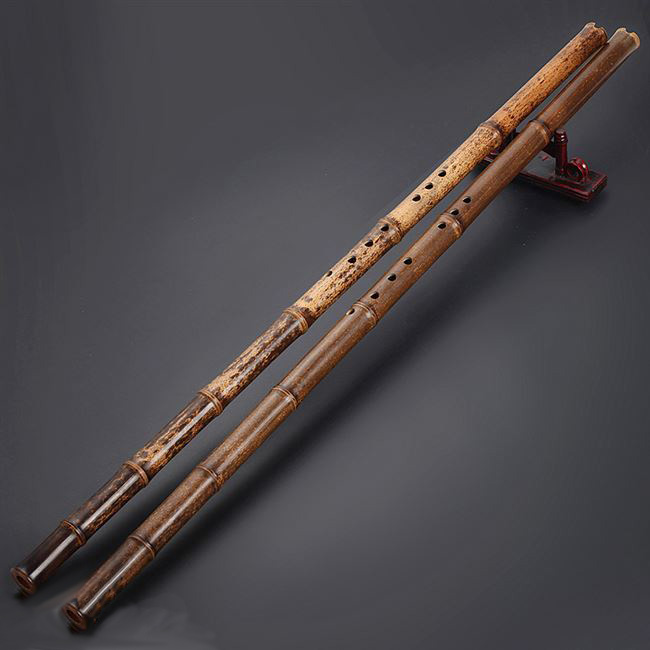xiao overview
 Xiao (pinyin: xiāo), divided into dongxiao and qinxiao. And because the flute has a hole, it is different from the pan flute without a hole, so it is called "dongxiao". The xiao has a long history, the sound is round and soft, quiet and elegant, suitable for solo and ensemble. It is generally made of bamboo with blow holes at the top. According to the number of "sound holes", there are six-hole flutes and eight-hole flutes. The sound holes of the six-hole xiao are the first five and the second one, and the eight-hole xiao is the first seven and the second one. The eight-hole Xiao is the product of modern improvement.
Xiao (pinyin: xiāo), divided into dongxiao and qinxiao. And because the flute has a hole, it is different from the pan flute without a hole, so it is called "dongxiao". The xiao has a long history, the sound is round and soft, quiet and elegant, suitable for solo and ensemble. It is generally made of bamboo with blow holes at the top. According to the number of "sound holes", there are six-hole flutes and eight-hole flutes. The sound holes of the six-hole xiao are the first five and the second one, and the eight-hole xiao is the first seven and the second one. The eight-hole Xiao is the product of modern improvement.Before the Han Dynasty, whether it was a horizontal or vertical wind instrument, it could be called a flute. From Ma Rong's "Flute Fu", it can be seen that the vertical flute originally had four holes, all of which were on the front side. This type of system is basically the same as today's Dongxiao. In the Han Dynasty, Wang Bao once wrote "Dongxiao Fu". However, there is the word "staggered" in the text, so it should refer to the pan flute.
In the Tang Dynasty, the "flute" was originally called the horizontal flute. As for the vertical flute, it was called "Shakuhachi" because of its length of one foot eight inches. And "xiao" was used to call the pan flute before the Tang Dynasty.
In the Yuan Dynasty, there were records of the five-hole flute as an instrument for feasting and music, and the flute was also distinguished from the pan flute. The Xiao was widely used in court rituals and music later.
In the Ming Dynasty, there was a more obvious difference between the single-pipe straight "xiao", the multi-pipe "pan flute" and the horizontal flute. The earliest existing independent spectrum is found in "Wenlin Jubao Wanjuan Xingluo", which is a Gongchi spectrum. In the Qing Dynasty, there was a book "Xiao Pu" by Ren Zhaolin.
In the 20th century, Peng Zhiqing published "Illustration of the New Yaxiao" in Jinyu Qin Journal, and invented the 8-hole Yaxiao, also known as the qinxiao, which is easy to play with the sound of the qin. Its twelve equal temperament facilitates instrumental ensembles.
- Pinyin:xiāo
- category:wind instrument
- material:Bamboo, wood, jade, stainless steel, resin
overview of other similar instruments
- sanyanxiao overview
- Daguangxian overview
- Leiqin overview
- hahao overview
- yandundagu overview
- Han Xiaozheng overview
- Fang Xiang overview
- guanzi overview
- zhuqin (Dao Qin) overview
- zhuiqin overview
- bangzi overview
- three-stringed piano overview
- Gehu overview
- xiao overview
- xiaokonghou overview
- Konghou overview
- Sheng overview
- suona overview
- hulusi overview
- gushao overview
 渝公网安备 50010702504639号
渝公网安备 50010702504639号